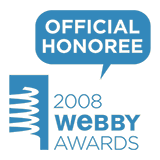Emdashes—Modern Times Between the Lines
The Basics:
About Emdashes | Email us
Ask the Librarians
Best of Emdashes: Hit Parade
A Web Comic: The Wavy Rule
Features & Columns:
Headline Shooter
On the Spot
Looked Into
Sempé Fi: Cover Art
Best of the 10.26.09 Issue: Peter Hessler, Finding the Center
Filed under: Pick of the Issue Tagged: China, Jonathan Taylor, Peter Hessler, travel

Jonathan Taylor writes:
The world does not revolve around you: It's the most basic experience of the traveler. Elaborating on the concrete ways this truth manifests itself is the most basic structure of travel narrative—but one that too often, paradoxically, cements the observer at the center of things. Peter Hessler's dispatches from China are a lesson in overcoming this solipsism, and his "Letter from Lishui," in the October 26 issue, takes points of view on "the outside world" as its topic of characteristically agile inquiry. (Subscribers only; free audio slide show here.)
Lishui is about 200 miles southwest of Shanghai, a bit inland from China's Pacific coast. Its physical location is less important than its place in the global economy. It is a creature of the global economy because its factories produce components—"zippers, copper wiring, electric-outlet covers"—to be assembled by manufacturers elsewhere into finished goods. Yet it is at a firmly defined remove from the wider world. Representatives of foreign companies need not travel this far up China's supply chain, and shrapnel of Western popular culture lands there in isolated bits: a gym called The Scent of a Woman, or a tattoo randomly reading Kent (the cigarette brand).
Hessler introduces "Little Long," a dye factory technician who collects mangled self-help books like A Collection of the Classics, larded with dubious improving anecdotes about Western figures like Charles Darwin and John D. Rockefeller; and Wu Zengrong, who interacts with individuals a hemisphere away through an electronic veil, as a professional player of World of Warcraft.
Alongside Lishui's fly-by-night pleather and bead factories, the government established something of a special district for the mass production of paintings, mostly kitschy old-world cityscapes. Any journalist could get a quick thrill out of describing a Chinese painting factory churning out thousands of scenes of Venice (known to the artists only a Shui Cheng, "Water City"), copying the details without a clue about what they are depicting. But Hessler cleverly uses these literal views of unknown places to illustrate the uses of information about the outside world in Lishui.
The degree of detail often impressed me. The outside world might be distant, but it wasn't necessarily blurred; people caught discrete glimpses of things from overseas. In many cases, these images seemed slightly askew—they were focussed and refracted, like light bent around a corner. Probably it had something to do with all the specialization. Lishui residents learned to see the world in parts, and these parts had a strange clarity, even when they weren't fully understood.
Hessler notes the distinctive way that residents of Lishui jump nimbly from one wave to the next in the senseless tides of the global economy, making do for themselves with little care why the world suddenly no longer wants pleather, but needs beaded shoes or hair bands instead. But when you consider those words by themselves, you can't help but think that they apply, in their own way, to "us," or any people planted any place on Earth.
Hessler loops back around to the U.S. to complete his point, which is not about China, or about art factories, but rather might be that the wider our global horizons, the more salient their limitations. A painting factory had received a commission from an unknown customer, via a middleman, to create art based on a series of photographs of what turned out to be Park City, Utah. Hessler shows pictures of the paintings, and the painters, to Park City folks. Mayor Dana Williams is excited that their local sites have gained global fame of a sort; others are suspicious or depressed by the subjection of their hometown to the low-cost foreign paintbrush. But Hessler's plain tone, unchanged from when he's in Lishui, allows Park City to take shape as another little place peering out at "the outside world" in curious fragments.
Mayor Williams knows a few words of Chinese and talks offhand about "the Tao"; his office is littered with calligraphic scrolls and a copy of Mao's "Little Red Book" that he mines for "the useful stuff" ("Serve the people"). He is a mirror of Little Long, who knows just the English words for his nylon dyes ("Sellanyl Yellow N-5GL") and learns from his A Collection of the Classics that Rockefeller wisely berated a waiter for complaining small-mindedly about a measly tip.
Everyone is the center of their own world, after all.




Comments
Hessler’s piece sounds intriguing. I look forward to reading it as soon as the hard copy arrives in my mailbox. It’s good to see Hessler back in the magazine. It’s been ten months since his last article, I believe. I admire his writing immensely. His “Walking The Wall†(May 21, 2007) is one of my all-time favorite New Yorker writings.